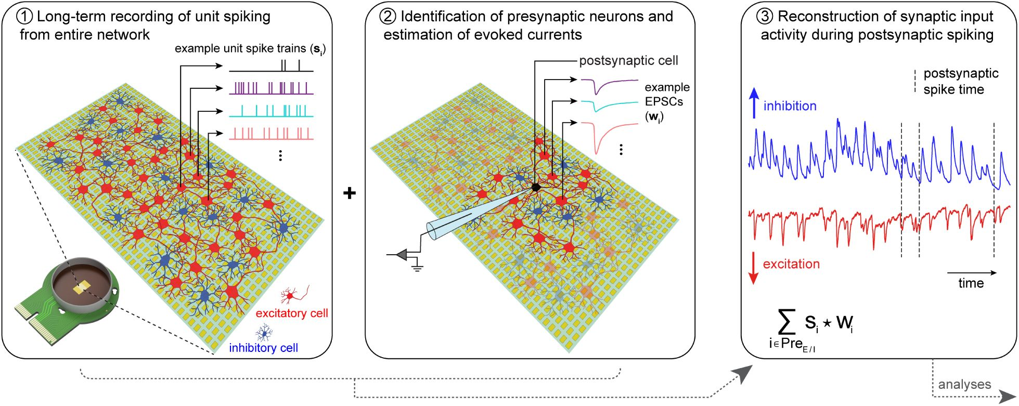Combining patch clamp and HD-MEAs to characterize synaptic inputs
Characterization of synaptic integration in large and active networks of cultured neurons by using simultaneous patch-clamp and large-scale extracellular recordings. Development of a method to distinguish excitatory and inhibitory inputs to postsynaptic cells.


Self-sustained recurrent activity in cortical networks in the brain is thought to be important for multiple crucial processes, including circuit development and homeostasis. Yet, the precise relationship between the synaptic input patterns and the spiking output of individual neurons remains largely unresolved. We developed, validated and applied a novel in vitro experimental platform and analytical procedures that provide – for individual neurons – simultaneous excitatory and inhibitory synaptic activity estimates during recurrent network activity. Our approach combines whole-network high-density microelectrode array (HD-MEA) recordings from rat neuronal cultures with patch clamping and enables a comprehensive mapping and characterization of active incoming connections to single postsynaptic neurons. We found that, during network states with excitation(E)-inhibition(I) balance, postsynaptic spiking coincided precisely with the maxima of fast fluctuations in the input E/I ratio. These spike-associated E/I ratio escalations were largely due to a rapid bidirectional change in synaptic inhibition that was modulated by the network-activity level. The results were published in external pageeLife (J. Bartram, et al., "Parallel reconstruction of the excitatory and inhibitory inputs received by single neurons reveals the synaptic basis of recurrent spiking", eLife 2023, Article 12:RP86820).
